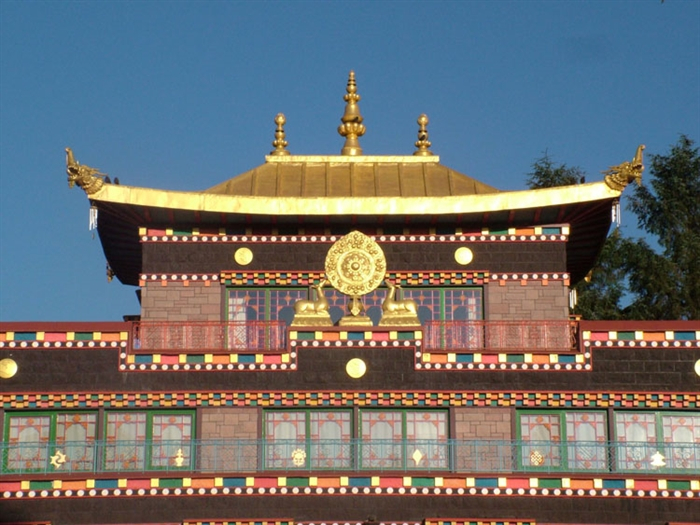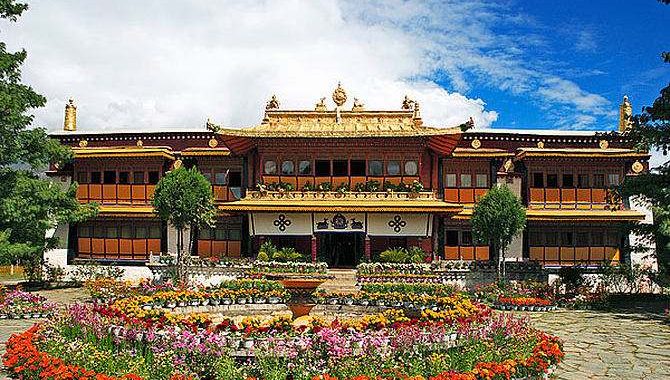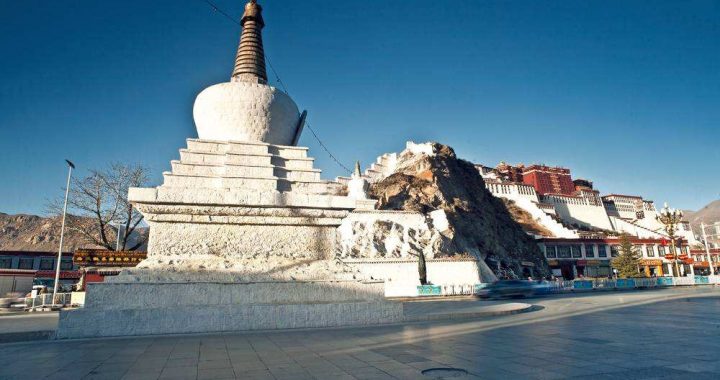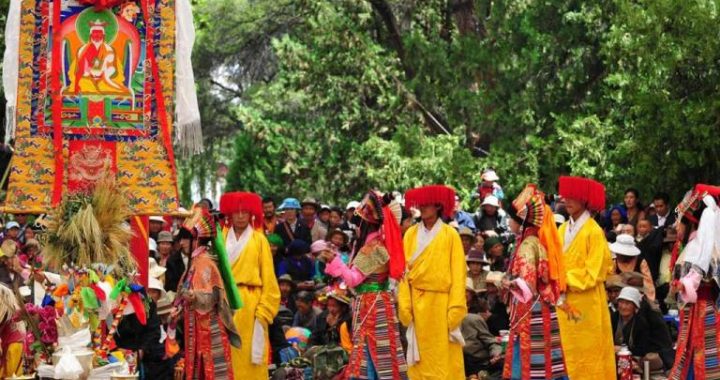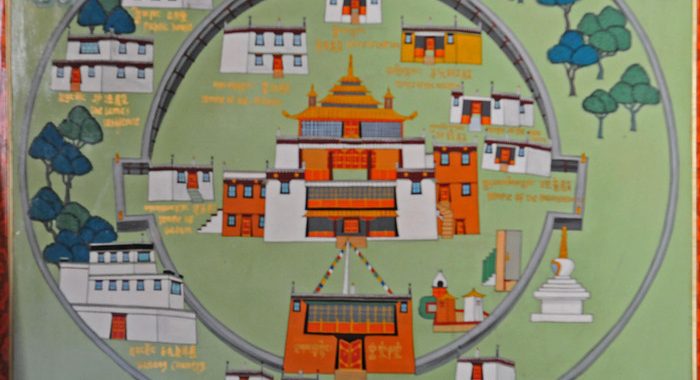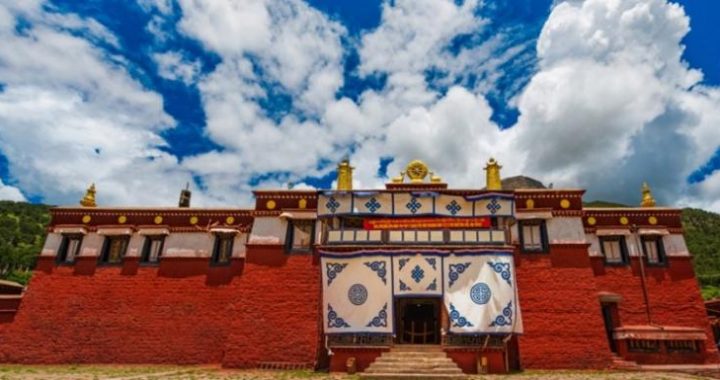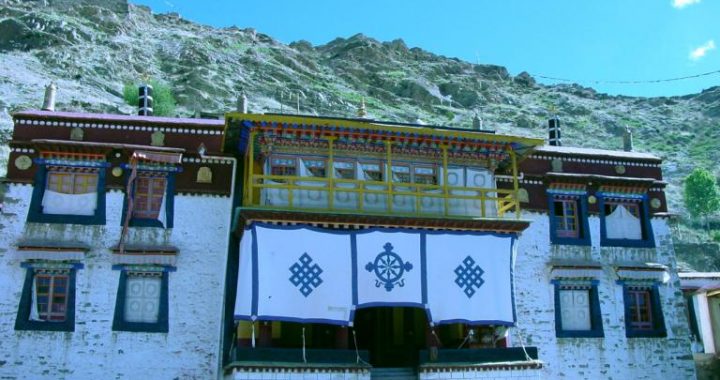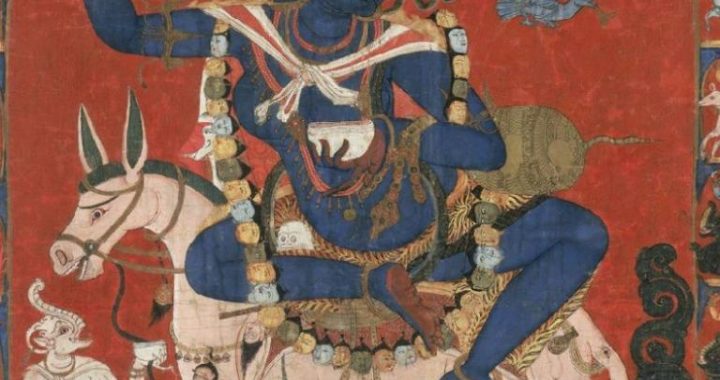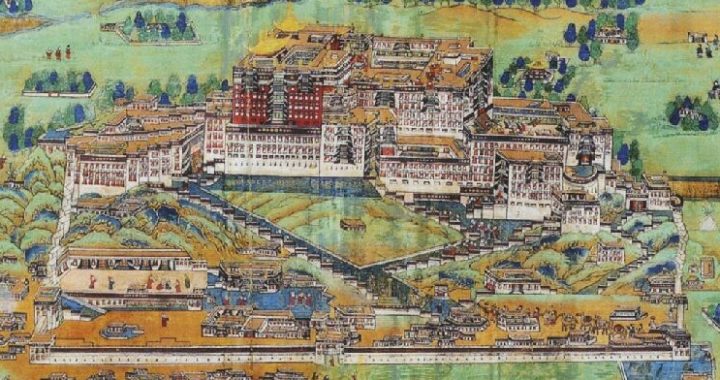The First Tibetan Temple in the True Sense: Samye Monastery
5 min readEver since Buddhism’s being disseminated into the Tibetan plateau,a number of temples have been built up with most of them performing the single function to enshrine the sacred statues. In the eighth century Samye Monastery, also called Utse Chenmo Monastery or the Great Buddhist Law Wheel Monastery, housing Buddha statues and Buddhist scriptures and accommodating monks was constructed as the first Tibeta temple in the true sense. Located on Mount Zama at Samye Village, Ngagzha Townshipin Shannan Prefecture of Tibet, Samye Monastery is a renowned temple enjoying the longest history among all Tibetan cultural relics as well as the most magnificent structure in the Tubo Kingdom. It has been listed as a state key protection unit of cultural relics inside which there are valuable items reflecting the history, religious tradition and architectural style, so on and so forth of different periods in the Tubo Kingdom.
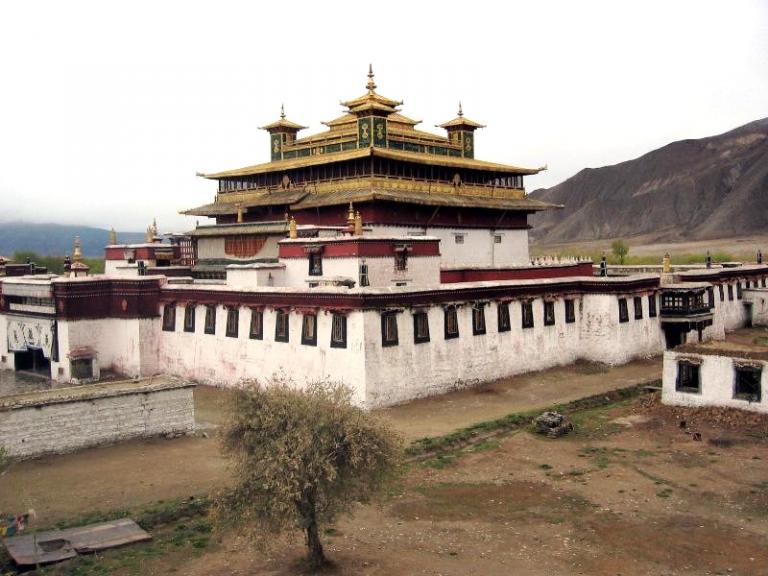
In early eighth century when the young Tubo King Trisong Detsen came to the throne, the anti-Buddhism ministers, organized a Buddhism-banning campaign which reduced a number of temples into ruins. In the eighth century Trisong Detsen killed the anti-Buddhism ministers, advocated for Buddhism, welcame the highly-veneratedmonks Shantarakshita and Padmasambhava into Tibet. Modeling on the Uddandpura, or the Otantapuri in ancient India, the Samye Monastery was constructed by combining the Han and Tibetan architectural styles. It took four years to construct the Samye Monastery which has altogether 108 halls and covers 25,000 square meters with the main structure being the Woze Palace or the Utse Rensong Lhakang. It is a grand temple complex of a complete range of functions.
Samye Monastery features a circular layout with solid walls all around. Withinthe monastery there is the main hall atop which the four protruding spots are covered with glazed tiles in different colors. Surrounding the main hall are twelve minor halls representing different parts of the universe as illustrated in theBuddhist sutras. The central hall of the Samye Monastery, the Woze Palace, or thePrimordial Lhakang facing the east, covers around 8,900 square meters. It is the most impressive structure in the monastery with the first floor and the second floor respectively consisting of the Buddhist sutra hall, the Buddhist chapel and the bedroom of Dalai Lama; inside the Buddhist chapel the main statue is that of Sakyamuni among the statues of Bodhisattvas, Guardian divinities and so on, whichpresent refined carving art. In the central top of the third floor is the three-level upward-tightening roof symbolic of the Chaturmaharajas (the Four Heavenly Kings). The upper, middle and lower levels respectively symbolize the three realmsof desire, form and non-form. The bottom of the Woze Palace typical of the Tibetan architecture is mainly composed of the Buddhist sutra hall and the Buddhist chapel; the middle layer in the Han style consists of the cloister, the Buddhist chapel and other constructions; the upper layer features five vying tops similar to those of Indian architecture. Thus the Samye Monastery is also regarded as a “three-fortune temple”incorporating the Tibetan, Han and Indian styles, so it is indeed a rare case among Tibetan constructions.
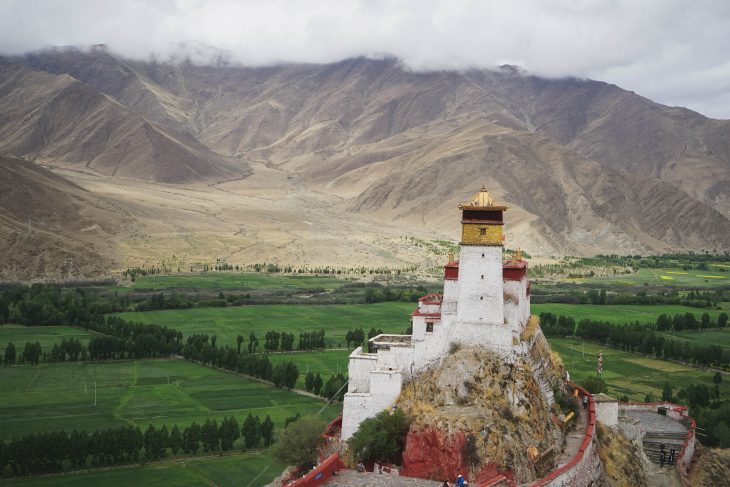
The main hall of the Samye Monastery is symbolic of the holy land of Buddhism asexpounded in Buddhist sutras. Aside from the Woze Palace symbolizing the Buddhistsacred land Mount Sumeru, there are other individual temple constructions symboli of the “twelve continents”and the “continents of the Sun and the Moon”Buddhist sutras. The four sides of the main hall are in different colors with the eastern structures in white crystal, the southern in the color of blue glazed tiles, the western in the color of red agate and the northern in the golden color. The walls ofall the constructions are covered with wave-like patterns, creating an effect that a sea seems to emerge on the walls. The structures symbolic of the twelve continentsmostly remain, but the original flavor of the main Buddhist statues and frescos is gone amid fires and the rampages incurred plus the erosion of the natural elements.
Upon the completion of “twelve continents”, the white, red, black and green pagodas of the Samye Monastery were built a dozen meters away from the Woze Palace, forming diagonal lines among themselves. The white pagoda in the southeastern corne is named thus because of its being white all over: it is built of stone slabs andblocks with 108 rectangular small stupas standing on the bounding wall above the pagoda base; the part of the pagoda above its waistline ascends like a flight of stairs, and the pagoda’s flat and broad belly is in the shape of upturned bowl; there is no shrine door, but 17 wheels around the Precious Kshetra.
In the southwestern corner is the red pagoda in a unique style: its body built of bricks and stones carries a brown sheen and its shape seemingly in a square is actually in a circle, just like an upturned bell; the body of pagoda above its waistline features wave-like patterns with the upper part being its belly shaped like an upturned bowl and atop the Precious Kshetra are two wheels with the upperone bearing signs of seven rings and the lower one nine rings. The black pagoda inthe northwestern corner also features a unique style: its body seems like a three layer upturned bowl;a sword is placed on the Kshetra base; the second wheel bearing signs of seven rings is atop with the precious vase lid and jewellery. The green pagoda in the northeastern corner is rectangular with its body made of green tiles; its pagoda base of a great height is divided into three floors with statues enshrining niches in the first and second floors and the third floor being the body of the pagoda in the shape of upturned bowl; above the third floor is placed with a long-bodied wheeled Kshetra. These four pagodas not only manifest distinctive architectural styles, but also exude classic elegance, so they have all the reason to be regarded as rare cultural relics in Tibet.
In addition there are colorful frescoes featuring vivid images of fluent strokes all over the large or small halls, cloisters and so on, depicting the history of Tibet, history of Samye Monastery, the biography of Padmasambhava, dancing and acrobatics, weight-lifting and Judo, track and field evenst as well as horseraces, which evoke endless admiration from the visitors. Besides, the fine stone carvings such as those of Avalokiteshvara (or Kuan-yin), Auspicious Goddess, and the Four Heavenly Kings are also valuable data for the research of Tibetan stone carving art.
On top of all, in the Woze Palace there is a bronze bell passed down from the Tang dynasty bearing the record of the Tubo King Trisong Detsen’s contributions to Buddhist evolution. It is a rare historic artifact.
